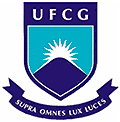|
|
References cited in the text must be arranged in the Literature cited at the end in alphabetical order starting with the last surname of the first author and in ascending chronological order and contain the names of all authors. If the number of authors is more than six, place after the sixth author et al. Place at the end of each scientific article reference listed the link to its doi for access, if available.
Examples of formatting are presented below:
a) Books
Rostagno, H. S.; Albino L. F. T.; Hannas, M. I.; Donzele, J. L.; Sakomura, N. K.; Perazzo, F. G.; Saraiva, A.; Teixeira, M. L.; Rodrigues, P. B.; Oliveira, R. F.; Barreto, S. L. T.; Brito, C. O. Tabelas brasileiras para aves e suínos: composição de alimentos e exigências nutricionais. 4.ed. Viçosa: UFV, 2017. 488p.
MAPA - Ministério da Agricultura, Pecuária e Abastecimento - Manual de métodos analíticos oficiais para fertilizantes e corretivos. 1.ed. Brasília, 2017. 240p.
Taiz, L.; Zeiger, E.; Moller, I. M.; Murphy, A. Fisiologia e desenvolvimento vegetal. 6.ed. Porto Alegre: ArtMed, 2017. 888p.
b) Book chapter
Motta, A. C. V.; Melo, V. F. Química dos solos ácidos. In: Melo, V. F; Alleoni, L. R. F. Química e mineralogia do solo: conceitos básicos e aplicações. Viçosa: Sociedade Brasileira de Ciência do Solo. 2019. Cap.1, p.1009-1076.
Da Matta, F. M.; Ronchi, C. P.; Eduardo Ferreira Sales, E. F.; Araújo, J. B. S. O café conilon em sistemas agroflorestais. In: Ferrão, R. G.; Fonseca, A. F. A. da; Ferrão, M. A. G.; De Muner, L. H. Café conilon, Vitória: Incaper, 2017. Cap.19, p.481-494.
c) Journals
Examples of Journals that adopt article pagination corresponding to the page numbering of the PDF file
Anjos, F. A. dos; Ferraz, R. L. de S.; Azevedo, C. A. V. de; Costa, P. da S.; Melo, A. S. de; Ramalho, V. R. R. de A. R. Relationship between physiology and production of maize under different water replacements in the Brazilian semi-arid. Revista Brasileira de Engenharia Agrícola e Ambiental, v.26, p.21-27, 2022. https://doi.org/10.1590/1807-1929/agriambi.v26n1p21-27
Moura, M. de P.; Ribeiro Neto, A.; Costa, F. A. da. Application of satellite imagery to update depth- area-volume relationships in reservoirs in the semiarid region of Northeast Brazil. Revista Brasileira de Engenharia Agrícola e Ambiental, v.26, p.44-50, 2022. https://doi.org/10.1590/1807- 1929/agriambi.v26n1p44-50
Example of Journals that adopt electronic pagination with numbers only
Araújo, G. dos S.; Paula-Marinho, S. de O.; Pinheiro, S. K. de P.; Castro, E. M. de; Lopes, L. de S.; Marques, E. C.; Carvalho, H. H. de; Gomes-Filho, E. H2O2 priming promotes salt tolerance in maize by protecting chloroplasts ultrastructure and primary metabolites modulation. Plant Science, v.303, 110774, 2021. https://doi.org/10.1016/j.plantsci.2020.110774
Example of Journals that adopt electronic pagination with numbers and letters
Costa, P. S.; Ferraz, R. L. S.; Dantas Neto, J.; Martins, V. D.; Viégas, P. R. A.; Meira, K. S.; Ndhlala, A. R.; Azevedo, C. A. V.; Melo, A. S. Seed priming with light quality and Cyperus rotundus L. extract modulate the germination and initial growth of Moringa oleifera Lam. seedlings. Brazilian Journal of Biology, v.84, e255836, 2024. https://doi.org/10.1590/1519-6984.255836
d) Software references
SAS - Stastistical Analysis System. User’s guide statistics. 9.ed. Cary: SAS Institute, 2002. 943p.
R Core Team. R: A language and environment for statistical computing. Vienna: R Foundation for Statistical Computing, 2017. Available on: <https://www.r-project.org/> . Accessed on: Feb. 2020.
e) Other reference formats
INMET- Instituto Nacional de Meteorologia. Informações sobre as condições climáticas em Uberaba- MG. 2019. Available on: <http://www.inmet.gov.br/>. Accessed on: Jun 2021.
CONAB - Companhia Nacional de Abastecimento. Acompanhamento da safra brasileira de grãos: safra 2019/2020. Available on: <http://www.conab.gov.br/Conabweb/download/pdf>. Accessed on: Jun 2021
FAO - Food and Agriculture Organization - FAOSTAT (2017) Crops. Cowpeas, dry. Available on: <https://faostat3.fao.org/home/index.html#DOWNLOAD>. Accessed on: Nov. 2018.
MAPA. Ministério da Agricultura, Pecuária e Abastecimento. Brasília: MAPA, 2020. Available on: <https://agrofit.agricultura.gov.br/>. Accessed on: Mar. 2021.
EMBRAPA - Empresa Brasileira de Pesquisa Agropecuária. Uso de informações ambientais na modelagem e interpretação da interação genótipo x ambiente. 1.ed. Santo Antônio de Goiás: Embrapa Arroz e Feijão, 2020. 46p.
Allen, R. G.; Pereira, L. S.; Raes, D.; Smith, M. Crop evapotranspiration: Guidelines for computing crop water requirements. Rome: Food and Agriculture Organization, 1998. 300p. Drainage and Irrigation Paper, 56
IPEA - Instituto de Pesquisa Econômica Aplicada. Sobre a agricultura irrigada no semiárido: uma análise histórica e atual de diferentes opções de política. Texto para Discussão, 2018. 56p. https://www.ipea.gov.br/portal/
References that have one or two authors, having the same authors and being from the same year, and references that have more than two authors, having the same name as the first author and being from the same year, must be identified in the list of Literature cited after the year, with the letters a, b, etc., according to the citation in the text, place the letter a for the article cited first.
|
|




